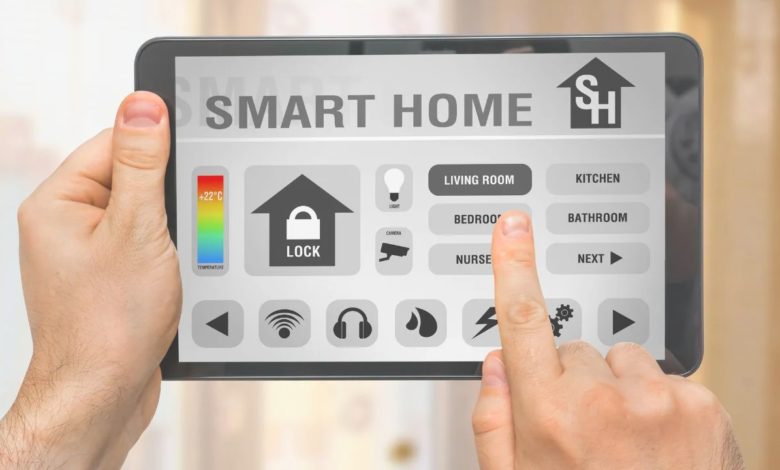
The smart home revolution has transformed modern living, promising convenience, efficiency, and futuristic control at our fingertips. From voice-activated assistants to self-adjusting thermostats, these innovations claim to simplify daily life but with so many gadgets flooding the market, which ones truly deliver value? As technology evolves, consumers face an overwhelming array of choices, making it essential to distinguish between must-have upgrades and overhyped gimmicks. This Smart Home Revolution explores the smart home devices that offer real benefits, helping you invest wisely in a smarter, more connected home.
While the smart home revolution offers exciting possibilities, not every gadget lives up to its promises. Some devices become indispensable, seamlessly integrating into routines, while others end up unused, collecting dust in drawers. The key is understanding which technologies align with your lifestyle, budget, and long-term needs. By evaluating factors like functionality, compatibility, and cost-effectiveness, you can build a Smart Home Revolution that enhances convenience without unnecessary complexity.
Inside the Smart Home Revolution
The Rise of Smart Home Revolution
The concept of a smart home has evolved from science fiction to everyday reality. With advancements in artificial intelligence, wireless connectivity, and the Internet of Things (IoT), homes are becoming more intuitive and responsive. The driving force behind this revolution is the desire for convenience whether it’s adjusting the thermostat remotely, monitoring security cameras from a smartphone, or using voice commands to control appliances. However, the rapid growth of smart technology has also led to market saturation, making it difficult for consumers to identify which products offer genuine benefits. Some devices integrate seamlessly into daily routines, while others fail to justify their cost.
Smart Home Hubs
A smart home hub acts as the central command center, connecting various devices and enabling them to work together. Popular options like Amazon Echo, Google Nest Hub, and Apple HomeKit allow users to control lights, locks, thermostats, and more through a single interface. For those heavily invested in smart technology, a hub is indispensable, streamlining operations and reducing the need for multiple apps. Yet, not every household requires a hub. If you only use a few standalone devices, such as a smart plug or a Wi-Fi-enabled bulb, a hub may be an unnecessary expense. Compatibility is another crucial consideration some hubs work better with specific ecosystems (e.g., Alexa vs. Google Assistant).
Smart Lighting
One of the most accessible entry points into the smart home revolution is lighting. Smart bulbs, such as Philips Hue or LIFX, offer customizable colors, dimming options, and scheduling features. They can sync with alarms, adjust based on natural light, or even change hues to match movie scenes, creating an immersive ambiance. The primary advantage of smart lighting is energy efficiency. light-emitting diode smart bulbs consume less power than traditional incandescent bulbs and can be programmed to turn off when not in use. However, the initial cost can be high, and some systems require additional bridges or hubs. For those seeking simplicity, smart plugs that convert regular lamps into automated fixtures may be a more budget-friendly alternative.
Smart Thermostats
Heating and cooling account for a significant portion of household energy consumption. Smart thermostats, like the Nest Learning Thermostat or Ecobee, optimize climate control by learning user preferences and adjusting temperatures automatically. They can detect when the house is empty, reducing energy waste, and provide usage reports to help homeowners track savings. Studies show that smart thermostats can reduce energy bills by up to 15%, making them a worthwhile investment for eco-conscious consumers. However, their effectiveness depends on proper installation and usage.
Smart Security Systems
Home security has seen some of the most impactful advancements in the smart home revolution. From video doorbells (like Ring and Nest Hello) to full-scale surveillance systems, these devices provide real-time monitoring, motion detection, and cloud storage for footage. Smart locks, such as August or Yale, eliminate the need for physical keys, allowing remote access and guest permissions via smartphone. While these features enhance safety, privacy concerns remain. Some devices have faced criticism over data breaches or unauthorized access. Additionally, subscription fees for cloud storage can add up over time.
Smart Speakers and Voice Assistants
Voice-controlled assistants like Amazon Alexa, Google Assistant, and Apple Siri have become central to smart homes. Beyond playing music or answering questions, they integrate with other devices, enabling hands-free control over lights, thermostats, and even kitchen appliances. However, their usefulness depends on how much you rely on voice commands. Some users find them indispensable, while others rarely use them beyond basic functions. Privacy is another consideration these devices are always listening, raising concerns about data collection.
Smart Appliances
From refrigerators that track groceries to washing machines that can be started remotely, smart appliances promise next-level convenience. Yet, their high price tags often outweigh their benefits. While features like energy monitoring and maintenance alerts are helpful, many smart functions are rarely used in practice. Unless you frequently upgrade appliances, sticking with reliable, non-smart models may be more cost-effective. However, for tech enthusiasts who value automation and connectivity, investing in a few key smart appliances (like a robot vacuum or smart oven) could enhance daily living.
What’s Really Worth It?
After examining various aspects of the smart home revolution, it’s clear that not all gadgets are created equal. The most worthwhile investments are those that offer tangible benefits energy savings, enhanced security, or genuine convenience without unnecessary complexity. Smart thermostats, lighting, and security systems consistently deliver value, while niche gadgets may not justify their cost. Ultimately, the best approach is to start small, focusing on devices that address specific needs. As technology evolves, compatibility and user experience will improve, making smart homes even more accessible. By making informed choices, homeowners can enjoy the perks of automation without falling for overhyped trends.
Read More: Scaling Smart: Proven Growth Hacks for Entrepreneurs
Conclusion
The smart home revolution has undoubtedly reshaped modern living, offering unprecedented convenience, security, and energy efficiency. However, as we’ve explored, not every smart gadget delivers equal value. The key to building a truly functional smart home lies in selective adoption prioritizing devices that solve real problems in your daily life rather than chasing every new tech trend. By focusing on core systems like smart lighting, thermostats, and security, you can create an automated home that’s both practical and future-proof.
As the smart home revolution continues to evolve, consumers should remain mindful of compatibility, privacy, and long-term usefulness. The most successful smart homes aren’t those with the most devices, but those where technology seamlessly enhances lifestyle without creating unnecessary complexity. By making informed choices and starting with foundational upgrades, you can enjoy the benefits of home automation while avoiding costly mistakes. Ultimately, the smartest home is one where technology serves you not the other way around.
FAQs
What is the most useful Smart Home Revolution device?
Smart thermostats and security systems are among the most practical, offering energy savings and enhanced safety.
Do smart homes save money in the long run?
Yes, devices like smart thermostats and LED lighting reduce energy costs over time, offsetting initial expenses.
Are smart home devices secure?
While generally safe, choosing reputable brands and updating firmware regularly minimizes security risks.
Do I need a smart home hub?
Only if you have multiple devices that require centralized control; otherwise, standalone products may suffice.
Can renters benefit from Smart Home Revolution?
Yes, portable devices like smart plugs, bulbs, and security cameras are renter-friendly and easy to install.











